Paddle vs. Pickle: The future for Paddle or 'Pop' tennis in St. Augustine up in the salt air
He walked on the moon, so why not St. Augustine Beach?
Players and fans at St. Augustine Beach near the A Street Ramp watching what was then known as the National Beach Paddle Tennis Championship on Labor Day Weekend in 1986 were stunned to see Edwin "Buzz" Aldrin, the second man to leave footprints on the moon, watching the competition.
Tanned and muscled only 17 years after his historic voyage with Neil Armstrong and Michael Collins on Apollo 11, Aldrin had begun playing paddle tennis in Los Angeles as a form of exercise and was told there was a version of the game being played in the Ancient City, on the hard-packed sand three hours on either side of low tide.
Aldrin was invited to the Beach Nationals and conveniently, he would be in St. Augustine anyway, staying at a friend’s condo to take advantage of the late summer seclusion to finish one of his five books.
Wearing mirrored sunglasses and looking the part of the fighter pilot who flew 66 combat missions in Korea, Aldrin watched a few games and then spoke for everyone who saw him there.
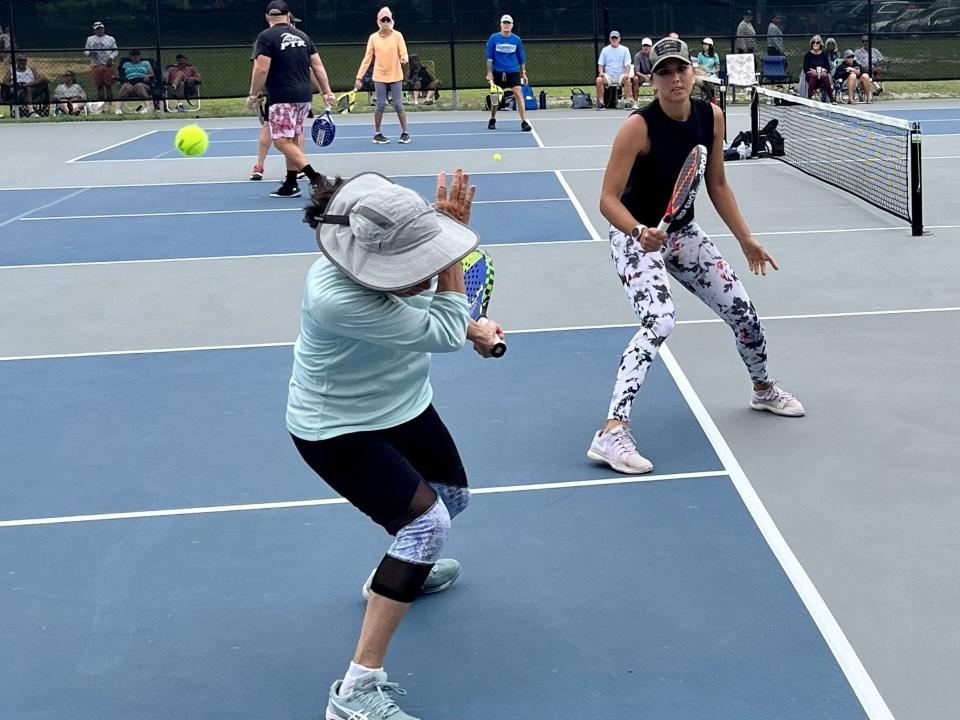
“Wonder if we could play this game on the moon?” he said.
On St. Augustine Beach or the Sea of Tranquility, it would have been a party.
Beach Nationals turn 50
When the Beach Nationals (now called the National Beach Pop Tennis Championship) began in 1973, paddle tennis wasn’t the only activity on the beach.
There was the legendary luau, complete with pigs buried in the sand, hot coals above and below, beer flowing, music playing, a bonfire roaring and pretty much an all-night party until dawn.
Decades later, there’s a lot people can’t do on the St. Augustine beaches.
No drinking. No bonfires. No spending the night in the back of a pickup, a van or a blanket on the sand.
No barbecuing either, let alone an authentic Hawaiian luau.
“I think if we tried to do any of that now, they’d put us under the jail,” said Ric Schilling, one of the early St. Augustine paddle tennis enthusiasts and organizers.
But once a year, they still play paddle tennis — called “Pop Tennis” since 2014 — on the St. Augustine sand, with the distinctive sound of tennis balls meeting a carbon composite racket face blending with the ocean’s roar and sweet Florida breezes.
On Memorial Day Weekend, the 50th National Beach Pop Tennis Tournament was played at Butler Beach and Ron Parker Park, with more than 120 participants (it moved from Labor Day several years ago to lessen the possible impact of tropical weather).
The tournament began on a somewhat unofficial basis in 1973 (more on that later) and the sport became so popular in St. Johns County that two parks, Ron Parker and Treaty Park, included lighted, hard-surface paddle tennis courts when they were built.
But it’s the game on the sand that brings people back every year, including players from as far as New York and Los Angeles. And wherever the game is played, know this: St. Augustine is the only place in the world where the game is played on the beach.
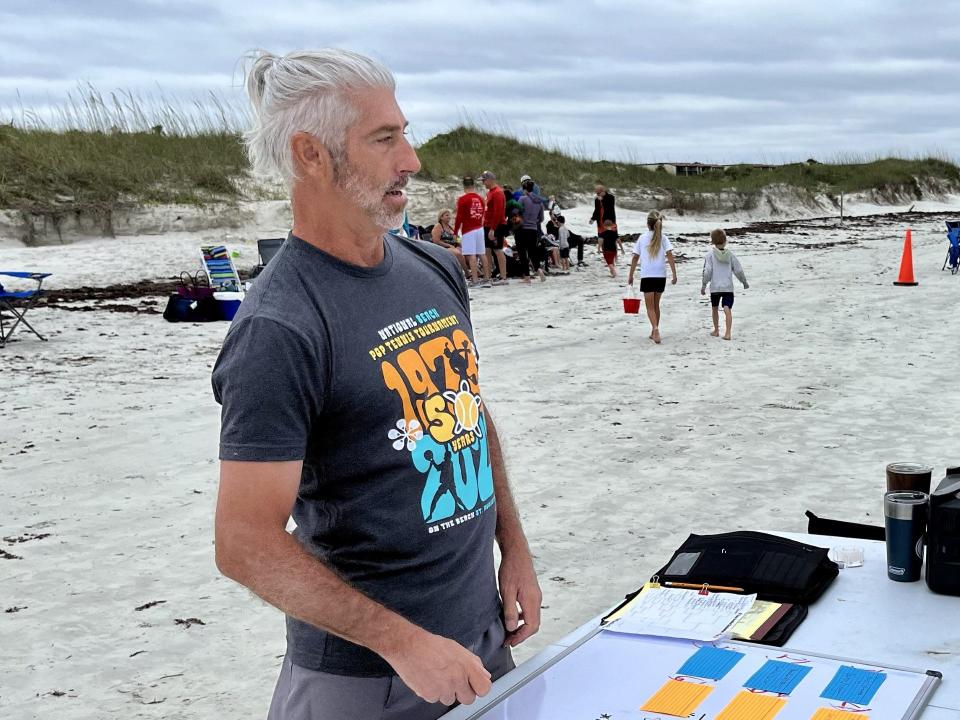
“There are paddle tennis courts all over,” said Russ Garber, a nine-time Beach Nationals champion from Brighton Beach. “But playing it on the beach is a special experience. To be fair, I wouldn’t come down here if we couldn’t play it on the beach.”
Jack Driskell, who finished second in the men’s open division in 1976 and is now 78 years old and a spectator, said reaching 50 years was never a goal.
“It would have been the furthest thing from our minds,” he said. “When we first started it was just another way to have fun on the beach. We never gave a thought about what it might turn into. We were just enjoying it.”
Origins more than a century old
According to the International Pop Tennis Association ("Tennis with a Twist"), the sport goes back to 1898. The paddle was made of wood and the ball of rubber. By the 1920s, the first tournaments were held in New York, mostly near the beaches of Brooklyn and Queens.
It has evolved to fairly simple concepts, scoring and court size: a pop tennis court is 20 feet by 50 feet, or half the size of a tennis court. The net is 31 inches high. The tennis balls have been de-pressurized by poking a hole with a pushpin.
Scoring is the same as tennis, although sometimes there is no “ad point,” in the interest of faster matches. One serve is allowed, and it must be underhanded.
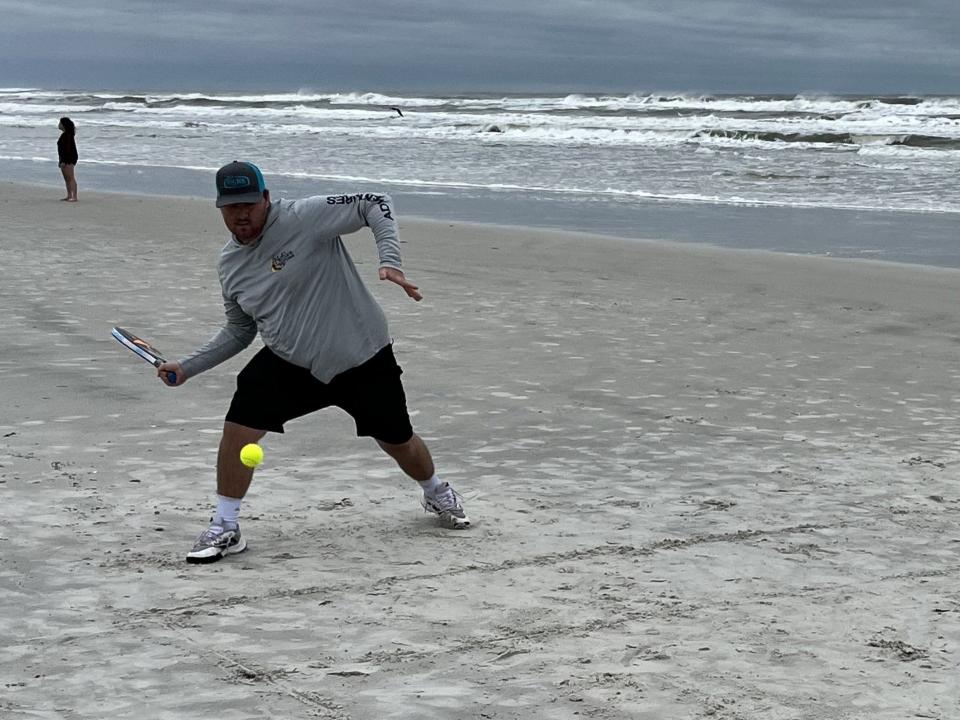
Once the ball is in play, it’s a fast-paced game with quick, explosive rallies at the net. That’s especially true on hard surfaces but most players of all skill levels also rush the net at the beach to avoid bounces off the sand as much as possible.
While the beach version of the sport is played on the wide, hard-packed beach in St. Augustine, the ball can still hit a dead spot on the sand and simply die, leaving the player waving at the breeze.
“Beach bounces,” they call them.
“You try to win the point in the air,” said Ernesto Russo, a native of Italy and a former top-100 junior tennis player in Europe who came to pop tennis at Venice Beach in Los Angeles.
Russo, who won this year’s Mixed Doubles with former University of Southern California tennis player Becca Weissmann (who won the women’s open division with Katrina Glusac), said the sport attracts tennis players who want more action.
“I fell in love with it right away,” he said. “To compare the two, I would say tennis is like boxing and pop tennis is like UFC. You’re closer to your opponent, it’s very aggressive with most of the shots at the net.”
Sheryl Craig, a five-time women’s open winner of the Beach Nationals with Judy Moore in the 1980s, played tennis at the famed Nick Bollettieri Academy in Bradenton and later at Flagler College. She became a tennis instructor for the St. Johns County Recreation Department but saw in pop tennis a chance to rejuvenate her competitive instincts.
“It was a completely different sport, but I loved it,” said Craig, who won the Women’s Masters this year with Becky Sejeck. “And being on the beach was really unique. I had never seen anything like that in South Florida.”
Lagging behind 'The P-Word'
Mitch Kutner, president of the International Pop Tennis Association, said there were about 1.25 million participants in the U.S., with hotbeds springing up in Australia, New Zealand, Italy and Sweden.
But he and other pop tennis players are worried that Pickleball, played on a slightly smaller court, with a large version of a whiffle ball, may swallow up other racquet sports.
USA Pickleball claims 8.9 million people play the sport in the U.S. It’s the favored sport in retirement communities and is now played by celebrities on TV such as Dierks Bentley, Sugar Ray Leonard and Stephen Colbert.
“There are some battles for court time,” Kutner said. “Pickleball is growing so fast that I think it’s threatening tennis, not just pop tennis. They’re even taking over outdoor basketball courts with portable nets. Sometimes there’s some bad blood. But I’m very optimistic that we can continue to co-exist with Pickleball and grow.”
Pop tennis players scoff at the slow pace of Pickleball compared to the slugfests at the net in their sport.
“I won’t say the ‘P-Word,’” said Maria Williams, whose late husband Dale was such a force in driving the popularity of the sport in St. Augustine that the Ron Parker Courts are named for him. “Pop Tennis is more of a power game, faster-paced and more athletic.”
“The Pickleball people are everywhere, but they still can’t play it on the beach — it doesn’t work with their ball,” said Stacy Gaines, one of the Beach Nationals committee members. “But playing on the beach is getting harder. We need a permit from the county. We have to buy insurance. We have to pay for an off-duty [SJSO] officer. You just can’t roll the nets out and play anymore.”
Sport evolved in two regions
While the New York version of paddle tennis was evolving during the Roaring ‘20s, another version was being played in St. Augustine — unbeknownst to participants at either place.
According to local legend, a version of handball on the beach, using tennis balls, was played in St. Augustine during the 1920s. Later, a net and homemade paddles were added.
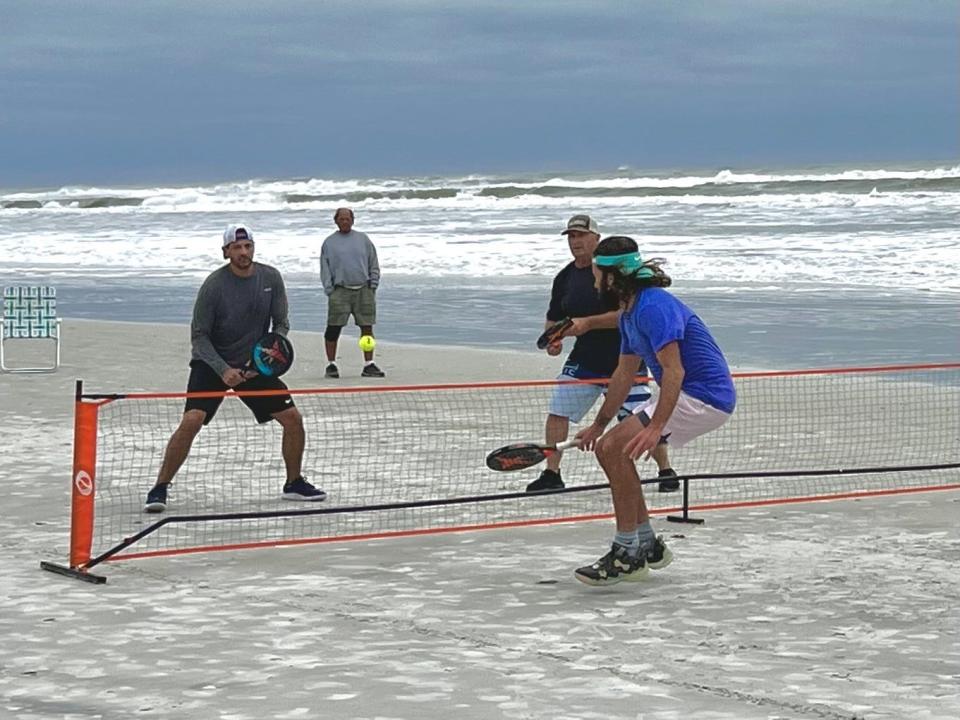
Among those who played the game was an attorney, Leslie Stephens. He kept the informal beach version of the game alive and eventually attracted the attention of a group of administrators, coaches and teachers at the Florida School for the Deaf and Blind.
The Blind School principal, Buddy Davis, began incorporating the game into beach parties for the faculty and staff when they celebrated the end of the school year or before the new school year began. Their Labor Day picnic always included a paddle tennis tournament.
One of the FSDB coaches, Tom Parragin, was injured one Labor Day. Instead of playing he supervised the tournament. Friends from outside the school community were invited to play, including former St. Augustine High football coach Walt Slater, who won the men’s doubles with Davis.
Parragin, almost as a joke, decided to send the results to the St. Augustine Record, calling the tournament, “the World Championship Beach Paddle Tennis Tournament.”
The sports editor, the late Pete Osborne, wrote a story and added the fact that Slater played football for the University of Tennessee and the Pittsburgh Steelers.
That attracted the attention of an AP editor at the Florida state desk and the wire service moved a short story that ran in many newspapers nationwide — among them one of the New York papers, where Murray Geller, a veteran of the paddle tennis scene in Brooklyn, wondered at first who had the gall to call it the World Championship without including New York.
But his curiosity was piqued. He contacted Slater, who had retired as the Yellow Jackets' coach and was a business manager at FSDB. Slater invited Geller to St. Augustine for the next Labor Day Tournament and by then he not only forgot being miffed and was fascinated about the game on the sand.
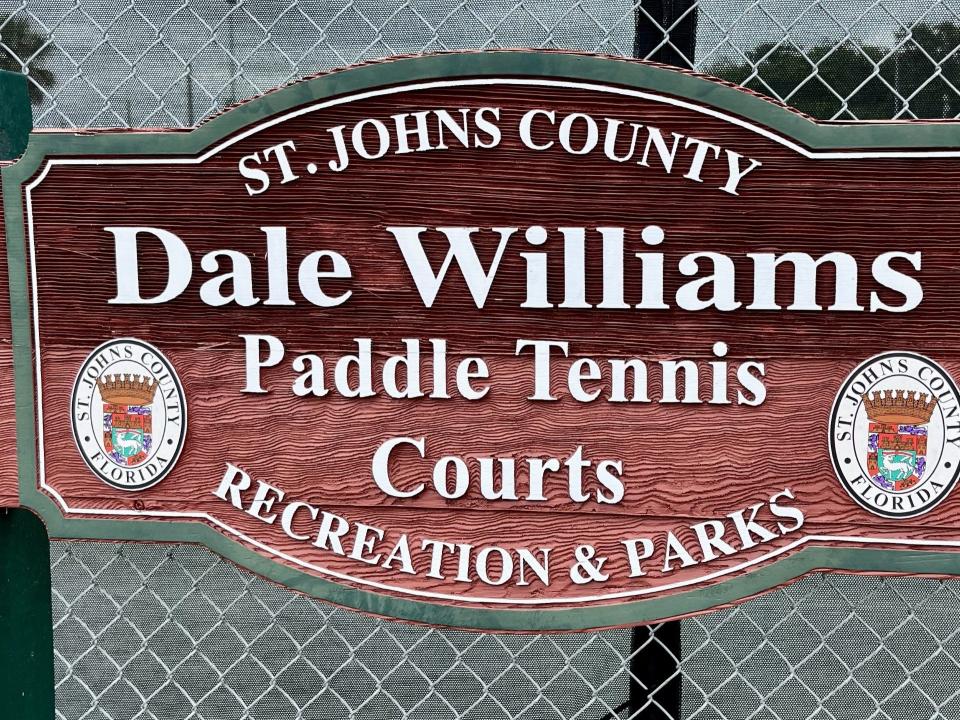
Geller offered a few tips that led to the way the game is played now: reducing the size of the court and service area and going from two overhead serves to one underhand.
The blending of the two games also served to increase the sand version’s popularity on a nationwide basis when teams from New York and California began descending on the Ancient City to dominate the Beach Nationals.
SoCal/New York influence
During much of the decade of the 1970s, paddle tennis in St. Augustine was played by a colorful assortment of beach-goers: school teachers, coaches, surfers, slow-pitch softball players looking for a different challenge, former Flagler tennis players, others with no discernible means of support and at least one charter pilot — Driskell — who flew fishermen to the Bahamas out of the St. Augustine airport in addition to his job as an FSDB resident supervisor.
“You’d see guys surfing, and when their match time got close, they’d just come out of the water, get their paddle and go play,” Driskell said.
The nets were strung on pipes embedded in tires with concrete, which were transported to the beach in pickups and rolled onto the sand. That led to another kind of combination: Schilling said there would be races by rolling the poles down the beach.
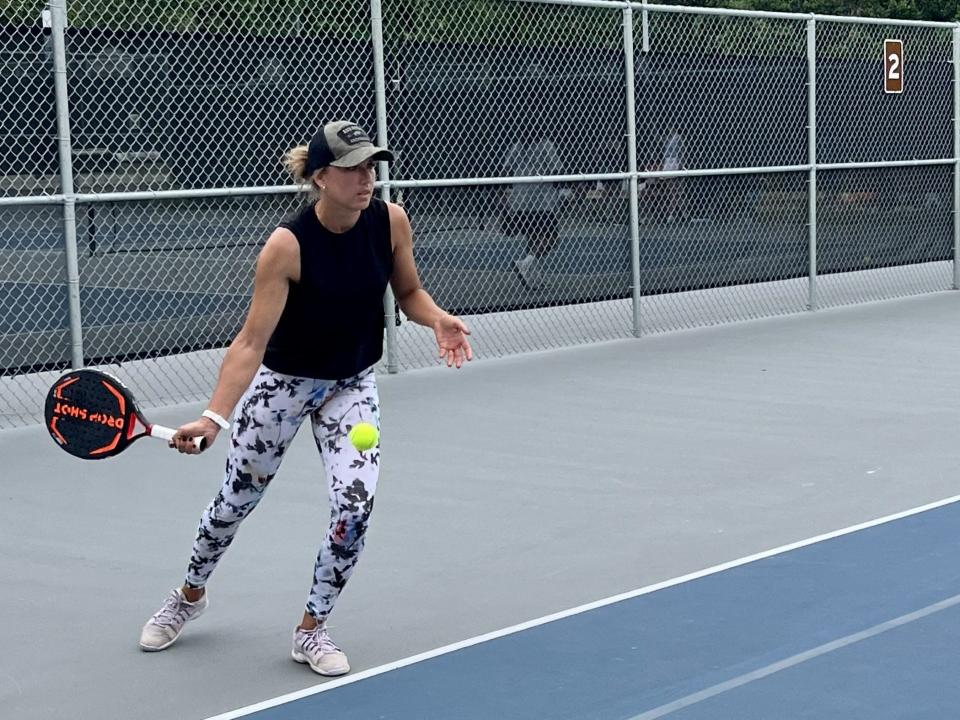
Vans and pickup trucks would be parked behind the nets to serve as backstops — and also served as sleeping quarters most nights, especially after the luau.
But beginning in 1976, outside forces began to dominate the men’s open division.
It began when Geller’s son Steve combined with Phil Dukes and Jeff Fleitman, two other New York residents, to win it from 1976 to 1978.
Then Fleitman, a powerful hitter with long, flowing blond hair held back by a headband, combined with Sol Hauptman, a tennis instructor from Southern California who favored skin-tight muscle shirts, to completely take over the Beach Nationals.
Strutting and shouting, screaming at each other for netted shots and celebrating winning smashes with fist pumps, the two won the men’s open three years in a row from 1979-81, then three more years in succession from 1984-86.
Paddle tennis partners came and went like the shifting Atlantic Ocean winds. Jeff Fleitman won twice with his brother Steve and Hauptman teamed with Scott Freedman to win four in a row into the early 1990s, and a record nine times in all for one partnership.
Hauptman eventually won 16 open titles with four partners. Freedman won his 15th title this year with Daniel Wulff, his fourth partner. Fleitman won 10 times and Garber nine.
In the meantime, there was the force of nature that is Denise Yogi. The Culver City, Calif., resident broke the domination by Craig and Moore (who won five times) in the women’s open by winning seven times with Marni Lovrich, then two more times with Sonia Lucci.
And at the age of 63, Yogi returned on Memorial Day for the first time in 12 years and played seven matches in three days, joining Katsiaryna Lukomskyaya to give Weissmann and Glusac all they could handle in the women’s open (losing matches 6-4, 4-6, 6-4 and 6-3, 6-3), and combining with Mike Cohen to finish second to Gaines and Calvin Page in the Mixed A division.
“She’s incredible,” Weissmann said of Yogi, who hit a steady succession of drop shots and forehands that split her two opponents. “She’s an inspiration.”
Locals have embraced the visitors
The St. Augustine pop tennis players have never expressed any resentment at the money and trophies leaving town. Instead, they embraced the notoriety that the New York and California teams brought to the tournament, making it truly a “National” event.
“We were resigned to the fact that they were bringing better players here,” Schilling said. “But they brought a national feel to the tournament. That’s what we wanted. The funny thing is that Tom [Parrigan] was joking when he sent the results to the paper and called them ‘the World Championships’ and that’s what we eventually became.”
Mark Kempler, a veteran organizer and a reliable historian on the Beach Nationals, said St. Augustine players have always tried to be good hosts.
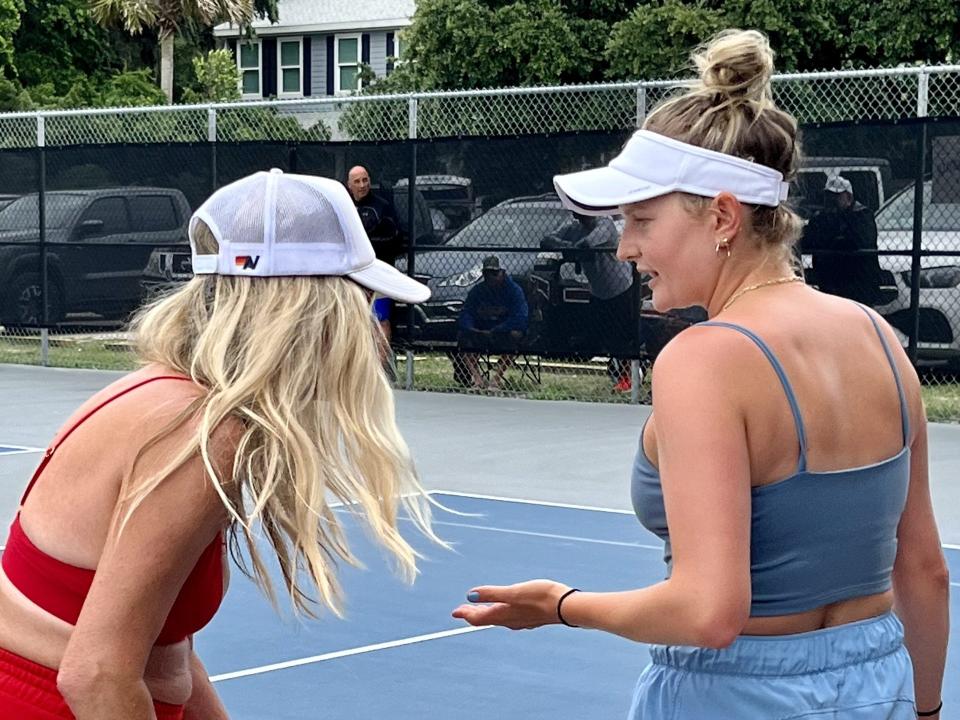
“St. Augustine still has a small-town vibe you can’t get in New York or Los Angeles and I think a lot of the out-of-town players appreciate that,” he said. “We remember that they’re paying to come here.”
Yogi said she was amazed at seeing the same faces as the last time she played, in 2011.
“It’s about relationships,” she said about the allure of the Beach Nationals. “I haven’t been here in 12 years and people greeted me like I was still one of their best friends.”
The future on the sand
As Jack Driskell said, the early pioneers of the Beach Nationals weren’t thinking about how long they could go.
“It just turned into this cool thing to do on the beach besides getting a tan,” Schilling said. “You got some exercise, associated with friends of like character and had some fun.”
But there’s that P-word again.
“We’re going to keep going but none of us are sure how much longer we can compete with Pickleball,” said Beth Bowen, who has played the Beach Nationals in parts of five decades.
However, the Beach Nationals committee was still able to muster more than $21,000 in cash and prizes for this year’s tournament, has “platinum” sponsorships from addidas, Drop Shot and All Racquet Sports and 12 other sponsors including local businesses such as Craig Funeral Home, Sunset Grille, Salt Life, Consignment Boat Services, South State Bank and Burney’s Septic.
“Our sponsors have been very good to us,” Gaines said. “The cost of putting this tournament on has gone up but if we want to keep playing on the beach, we have to find a way.”
And it’s the “Beach” part of Beach Nationals that has kept it going for a half-century.
“No other tournament in the world does this,” said Carl Reich, a member of the tournament committee. “There’s a certain allure to it that keeps us going.”
This article originally appeared on Florida Times-Union: Beach Nationals Pop Tennis turns 50, but will Pickleball push it aside?

